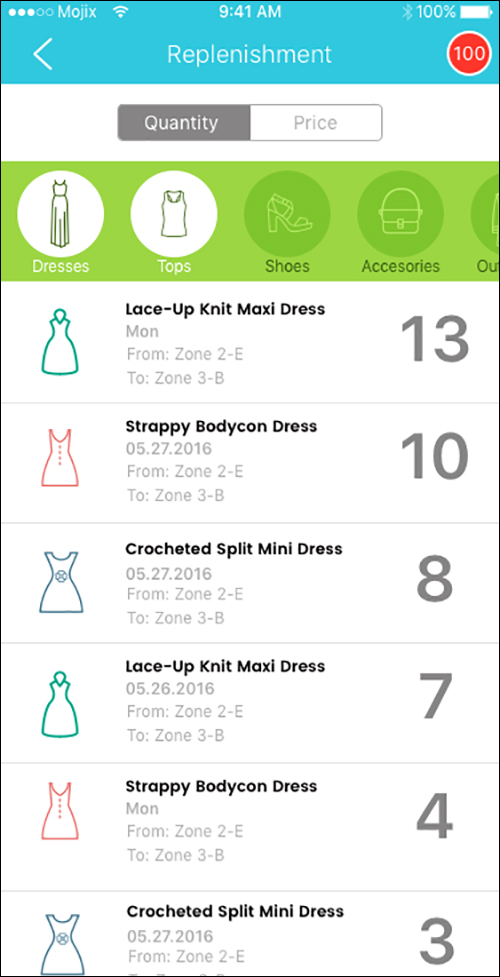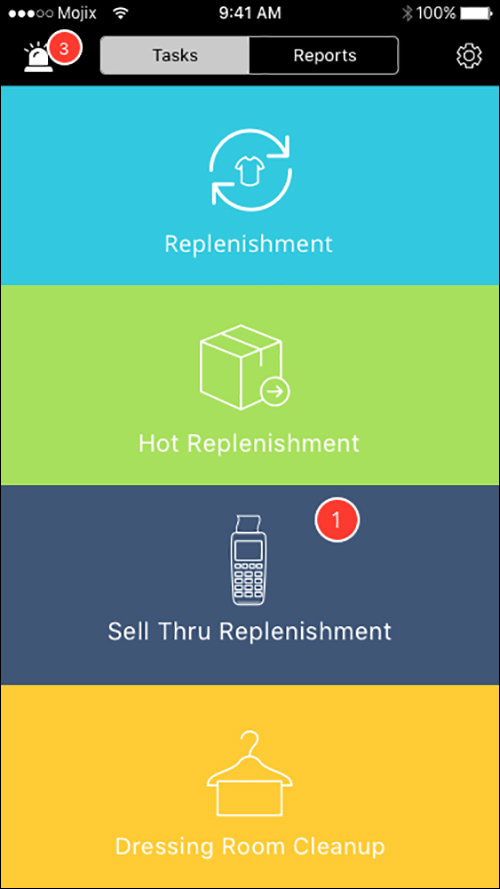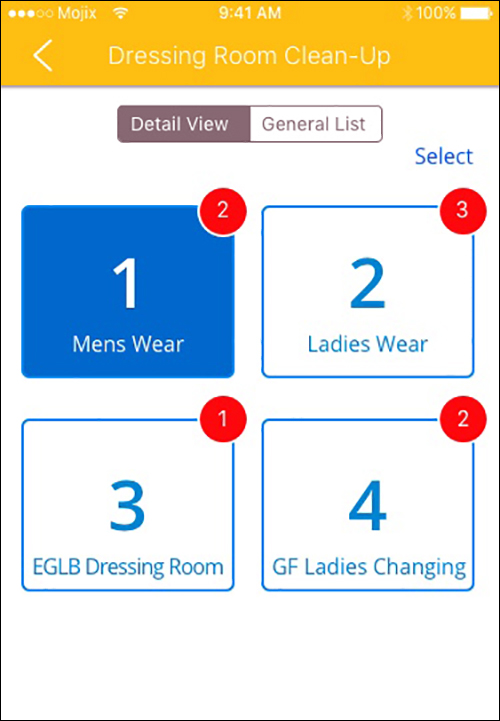Jan 13, 2017Radio frequency identification and sensor technology company Mojix has released a new set of products aimed at providing hands-free, item-level tracking for retailers and brands. Several stores and brands are already piloting the company's new TurboAntenna with Mojix's STARflex reader to capture items' locations within a store or stockroom in real time. The firm is also releasing the 1.0 version of an app known as Retail Task Management, that enables store employees to view inventory and replenishment details, based on the Retail Task Management software platform, on an iOS- or Android-based device, thereby making stock management easier.
In addition, Mojix is teaming with Microsoft to offer a Blockchain-enhanced version of its solution so that members of an enterprise supply chain—retailers, suppliers and logistics providers, for example—can view their transactions related to RFID tag reads via Blockchain-empowered smart contracts.

Mojix's new technology centers around making inventory management in the retail environment a reliable, real-time, hands-free proposition, the company reports, thereby sparing workers from having to carry handheld readers around a room to capture inventory data. "The original premise of RFID was about automatic data capture," says Scot Stelter, Mojix's product marketing VP. However, he adds, handheld readers have been the low-cost option for many retailers. Deploying fixed readers has been challenging not only due to their cost, but also in terms of functionality.
Stores, stockrooms and warehouses filled with goods destined for retailers can provide some of the most difficult environments for passive ultrahigh-frequency (UHF) RFID tag tracking, Stelter says. The sheer volume of tags, the density in which they are packed and the static nature of tagged goods can make it hard to capture all tag ID numbers at all times via an RFID reader. The large number of reflective surfaces within a store can create a field with high RF energy areas, as well as energy nulls in which RF signals fade. Stelter compares such an environment to an early-model microwave oven that would heat food but leave cold spots.
In the case of RFID, a reader may not be able to interrogate tags on goods stacked in a null zone in which RF energy is low, due to the antennas' reflections and positioning. In addition, the installation of numerous overhead RFID readers around a store or room can lead to interference—especially in Europe, where RFID vendors and users are restricted to utilizing only four radio channels. Due to such interference and the null zones, Stelter says, read rates have struggled to rise above 90 percent or higher.
According to Stelter, Mojix believes it has resolved this issue with the TurboAntenna—a phased-array antenna that transmits its RF energy throughout the room when connected to the Mojix reader. The antennas can be daisy-chained around the reader, with as many as 20 antennas per reader, enabling businesses to deploy a small number of readers to cover an area; typically, a 2,000- or 3,000 square-foot store would require a single interrogator and approximately 10 antennas. The reader cycles each antenna's transmission around it to further prevent reflections, stray transmissions and the creation of hot or null zones.
When a tagged item is placed within a store, warehouse or stockroom, the tag receives a transmission from the TurboAntenna and responds with its own ID. The reader calculates the tag's location based on the antenna to which it responded, then forwards that data to Mojix's ViZix IoT software platform, notifying the user if action is required. For instance, the technology can track whether goods remain at a single location longer than expected, such as in a fitting room, or if products need to be replenished.

If users also employ the Retail Task Management App as part of Mojix's OmniSenseRF Inventory Service, workers can access the collected data in real time from their tablet or phone. The app provides assistance in three scenarios, Stelter says. A basic replenishment function enables users to view the status of each stock-keeping unit (SKU) in the store's inventory on their phone or tablet, and to receive alerts when a specific SKU requires replenishment. In this scenario, app users can select a task, such as bringing replenishment inventory to the store front for a specific SKU, and other users will no longer view that task in the shared task list, thus preventing duplicate efforts.
The second use scenario is hot replenishment, in which goods have been received at a business and must immediately be replenished at the store front. In this case, personnel can view the need for goods in the storefront and bypass the process of storing them in the back room.
The third function allows topping off. In this third case, personnel can be more proactive, viewing the levels of goods throughout their business and moving or ordering inventory as needed to reach optimal supply levels.
The real-time inventory accuracy will provide retailers with greater confidence in their omnichannel capabilities to send goods from a store, Stelter says, even when inventory levels are low, and to measure and understand the business and how inventory is being made available and sold. It can also help prevent shrinkage, by tracking when goods end up missing, and by enabling users to pair that information with video footage or employee schedules in order to identify and address the problem.
The TurboAntenna and app have been tested in several pilots with retailers and brands throughout Europe and the Middle East since last spring, Stelter reports. There are three key use cases to date, he notes: the use of an overhead reader and antenna array for real-time monitoring within a store; the tracking of only goods arriving in stockrooms and at the point of sale, to monitor the arrival and departure of each piece of inventory; and, finally, the tracking of goods stored on merchandise fixtures by brand owners at third-party retailer locations. The TurboAntenna is designed to make installations easy, Stelter says, noting that the antennas can be dropped into ceilings and the daisy-chain functionality will limit the amount of cable required.

The Blockchain functionality, based on the bitcoin model, enables the use of a single, shared, distributed digital ledger of transactions so that users can automatically update information regarding their operations, such as the transfer of products from a warehouse to a store, that authorized members of the supply chain can then access. With Blockchain, using Mojix software, there is no centralized storage repository owned by a single legal entity—thus, not only is the stored data accessible, but it cannot be controlled or changed by specific parties.
"That provides tracking of inventory with real-time accountability," says Tom Racette, Mojix's global retail business-development VP. "Each transaction is built on the previous transaction," he explains, and all parties "can have full confidence in the integrity of that transaction data."
York Rhodes III, Microsoft's Blockchain global business strategist, says that teaming with Mojix on Blockchain "to explore the physical problem of inventory visibility across disparate legal entities is a game-changer for supply chain contracts." He adds, "We have taken an early bet on Blockchain and distributed ledger technology seeking to explore, vet and accelerate adoption of this game-changing technology."


